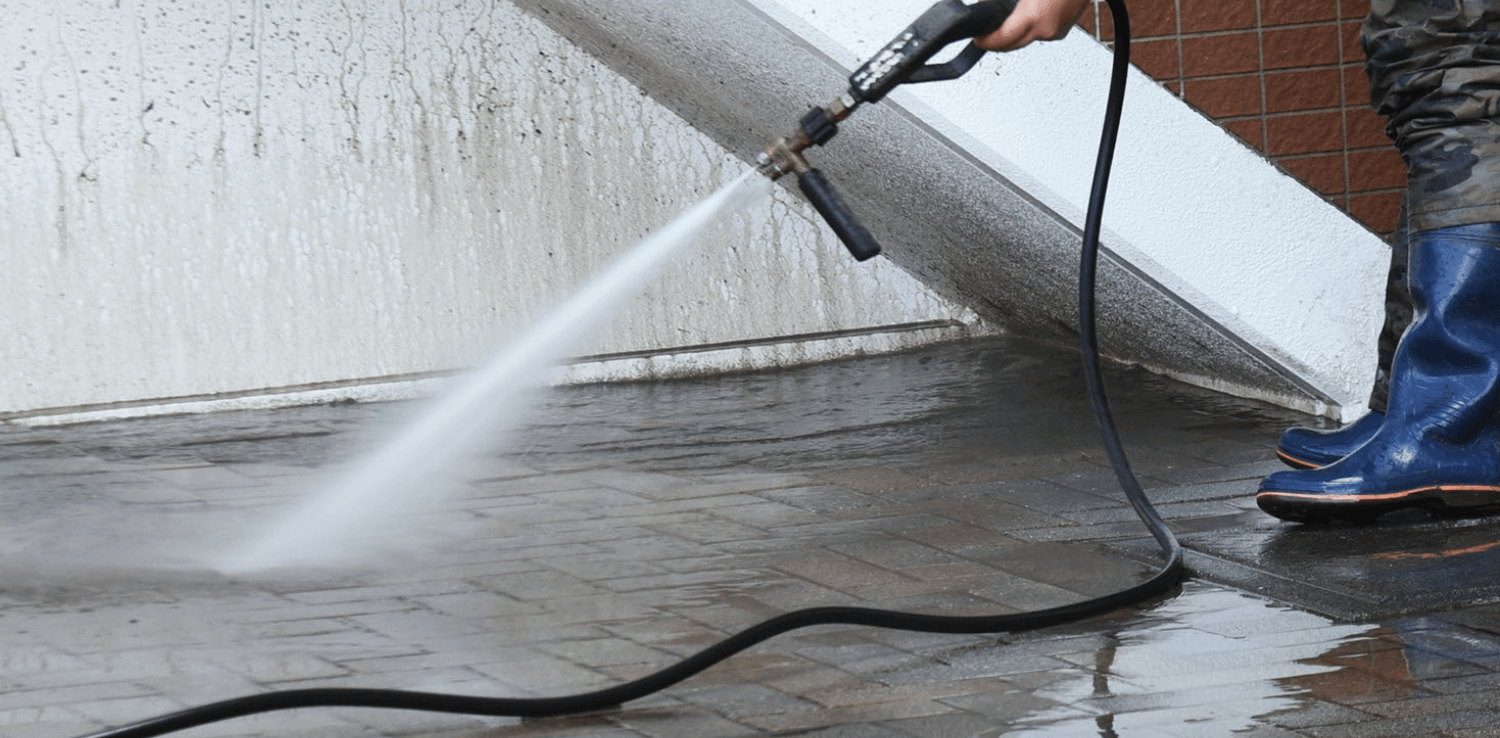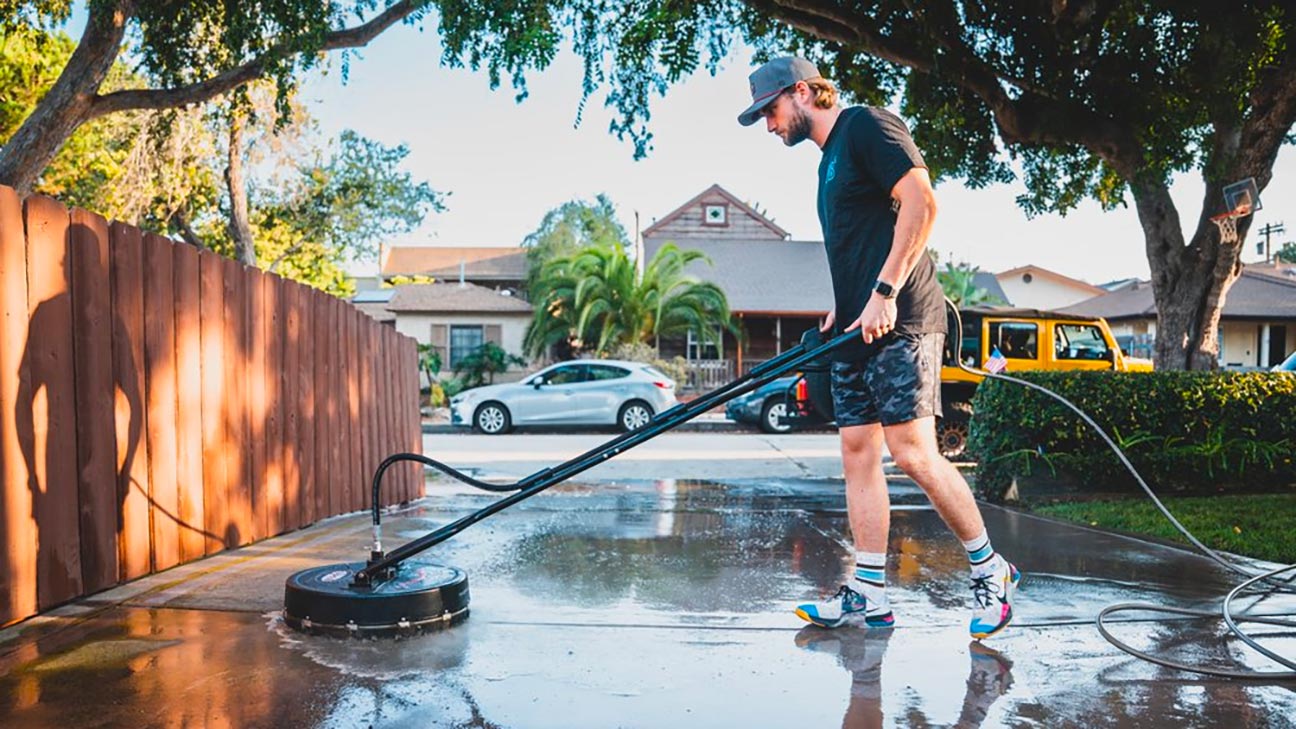Discover the Eco-Friendly Cleaning Methods Utilized by Pressure Washing Lockhart Specialists
Discover the Eco-Friendly Cleaning Methods Utilized by Pressure Washing Lockhart Specialists
Blog Article
Revitalize Your Home: The Ultimate Guide to Pressure Washing
Stress cleaning is an important tool for property owners aiming to recover the visual charm and longevity of their residential properties. Comprehending the nuances of stress scores, tools option, and effective cleansing methods can considerably boost the outside of your home. The procedure is not without its difficulties; improper strategies can lead to damage rather than restoration. To navigate these intricacies and accomplish optimum results, it is vital to discover the essential facets of pressure washing, consisting of useful suggestions on attending to common spots and ensuring security throughout the process. What adheres to may change your approach to home maintenance.
Recognizing Pressure Washing
Pressure washing is an effective cleaning technique that makes use of high-pressure water spray to get rid of dust, crud, mold and mildew, and other contaminants from various surfaces. This strategy is particularly effective on hard surfaces like driveways, sidewalks, decks, and exterior siding, where conventional cleaning techniques may fail. By employing specialized equipment that generates high-pressure streams of water, stress cleaning can pass through deeply right into surface areas, successfully removing and removing stubborn debris.
The process is not just reliable yet additionally eco-friendly, as it usually relies exclusively on water, lowering the demand for severe chemical cleansers. Additionally, stress cleaning can improve the aesthetic appeal of properties, preserving their worth and lengthening the life expectancy of surfaces by preventing deterioration brought on by impurities.

Picking the Right Equipment
Choosing the appropriate devices is crucial for accomplishing optimum results in stress washing. The first decision includes selecting between electrical and gas pressure washing machines. Electric versions are normally lighter, quieter, and appropriate for household jobs like cleaning up automobiles or patio areas. Gas units, on the other hand, offer greater stress and flow prices, making them ideal for larger jobs such as cleansing driveways or home siding.
Following, consider the stress rating, measured in pounds per square inch (PSI) For light-duty tasks, a pressure washer with 1,300 to 1,600 PSI suffices, while medium-duty jobs generally need 1,600 to 2,500 PSI. Durable tasks may necessitate machines going beyond 2,500 PSI.
Furthermore, the circulation price, determined in gallons per minute (GPM), influences cleaning efficiency (Pressure Washing Lockhart). A higher GPM permits quicker cleaning but may require more effective tools
Methods for Efficient Cleaning

The strategy of overlapping strokes is essential for even protection. In addition, keeping a consistent distance from the surface, usually 12 to 18 inches, permits for reliable application without causing harm.
Utilizing the appropriate nozzle is also necessary. A wide-angle nozzle is excellent for bigger areas, while a narrow nozzle can target stubborn dirt or grime. Moreover, using a sweeping motion as opposed to a stationary spray helps to avoid concentrated areas of pressure, which can lead to surface damage.

Taking On Common Spots
When it involves keeping the appearance of outside surfaces, dealing with common stains properly is crucial for lengthening their life-span and boosting visual appeal. Various surface areas, consisting of plastic, concrete, and timber, can gather spots from organic materials, oils, and environmental pollutants, demanding a targeted technique.
For oil spots, a combination of go to website degreasers and stress washing can yield superb results. Apply the degreaser to the tarnished area, permitting it to penetrate prior to utilizing a pressure washing machine to remove the deposit. Organic spots, such as mold or algae, commonly need a solution consisting of bleach or a devoted mold and mildew remover, complied with by stress washing to recover the surface's initial look.
Corrosion stains, commonly discovered on steel surfaces, might demand specific corrosion removers. Use the item and scrub the area prior to pressure washing to remove any type of sticking around discoloration. It's vital to evaluate any kind of cleaning option on a small, unnoticeable location first to prevent damages.
Safety Tips and Finest Practices
Making certain safety while pressure cleaning is paramount, as the high-pressure water can position substantial risks if not managed correctly. To safeguard on your own and others, constantly wear suitable personal safety tools (PPE), including safety goggles, gloves, and strong shoes. This equipment will certainly shield you from flying debris and the capacity for injury.
Prior to beginning, evaluate the pressure washer for any type of leakages or harmed components. Familiarize on your own with the devices's guidebook to understand its operation and security functions. In addition, ensure the area you are operating in is without obstacles and that any type of electrical connections are risk-free from water exposure.
When operating the stress washing machine, keep a secure range from surface areas and stay clear of intending the nozzle at individuals, pet dogs, or fragile objects. Utilize the appropriate nozzle for the task, as different nozzles produce varying spray patterns and pressure levels. Finally, be mindful of your surroundings: safe loose products, watch for electrical lines, and avoid operating in damp problems that might cause falls or slides.
Verdict
To conclude, stress washing offers as a vital device for home owners looking for to improve building aesthetics and longevity. By recognizing the details of devices selection, reliable cleaning strategies, and typical stain elimination, the potential for renewing one's home ends up being evident. In addition, adherence to safety methods guarantees a efficient and safe and secure cleaning procedure. Ultimately, the expertise acquired from this overview equips home owners with the required skills to published here keep and elevate their building's charm and worth effectively.
Pressure washing is an effective cleansing method that uses high-pressure water spray to get rid of dust, grime, mold, and other contaminants from different surface areas. By using customized equipment that generates high-pressure streams of water, pressure washing can permeate deeply right into surface areas, properly dislodging and washing away stubborn debris.
Nevertheless, it is necessary to comprehend that pressure washing requires a specific level of skill and knowledge to prevent harmful surfaces. Softer materials like wood or painted surfaces require a lower pressure setting to avoid damage, whereas concrete or brick surfaces can withstand higher pressure degrees.
Organic discolorations, such as mold or algae, usually require a remedy having bleach or a dedicated next page mold and mildew eliminator, complied with by pressure washing to restore the surface area's initial look. - Pressure Washing Lockhart
Report this page